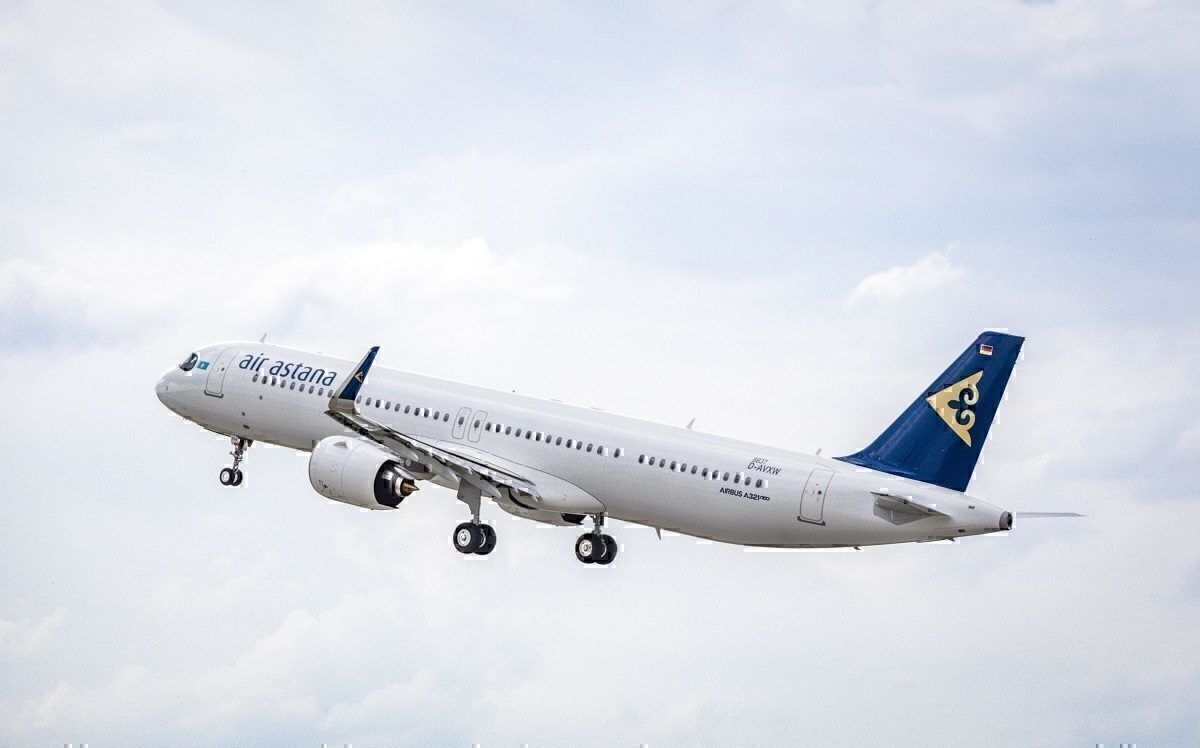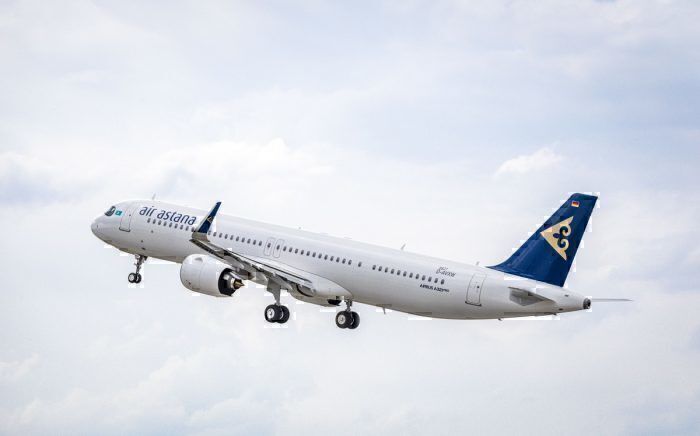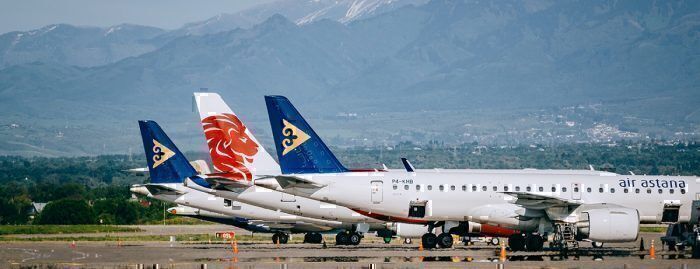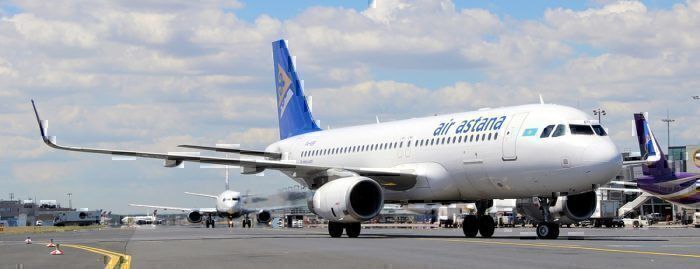Kazakhstan’s flag carrier Air Astana has taken delivery of an A321LR via Air Lease Corporation, becoming the first CIS operator of the aircraft. Writes Airbus, the A321LR will join Air Astana’s fleet of 18 Airbus types.
The long-range A321 (registration P4-KGA) is one of seven it hopes to take delivery of. The remaining six aircraft are expected over the next 12 to 18 months, according to Flight Global. That time frame will be determined by Airbus’s pace of production in Hamburg.
The aircraft is, according to Airbus, configured for 166 passengers: 16 business class seats and 150 economy class. Astana intends to replace its Boeing B757s with the new type on long-haul services to European and Asian destinations.
We have contacted Air Astana for further comment but have so far received no reply.
Air Astana
Air Astana is on course to become one of the largest operators of the A320 family the region. The airline placed an order in 2015 for 25 Airbus A320neo jets, including six A320-200neos, 11 A321neos, and eight A321LRs. A further six aircraft were ordered through ALC two years later.
The carrier currently operates three A321neos, four A321ceos, eight A320ceos and three A320neos. It also operates a selection of Boeing types.
Astana came about by a joint venture between Kazakhstan's national wealth fund and BAE Systems; both parties own roughly half each. From its main bases at Astana and Almaty airports, the carrier operates scheduled domestic services and international flights to Asia, the Middle East and Europe.
The interior of the new A321LR has been designed specifically for Air Astana. Business passengers are provided with a lie-flat seat and a 16-inch color screen and work system. Economy passengers with a 10-inch screen.
A321LR
Until Airbus unveiled its XLR variant in June the LR was a type with unprecedented range. Its significantly enhanced 4000nm range has since allowed airlines to fly long-haul routes that were off-limits for earlier single-aisle aircraft. The precursor to the A321LR had a range of 1000nm less.
The technological wizardry included in the design of the A321LR has led some industry analysts to consider the type to be a “Goldilocks” aircraft.
Writes Apex, Airbus’s product manager says of the type, “The A321LR is an evolution of a very successful product, the A321.
“It’s a fantastic platform that historically has been appreciated for having the biggest single-aisle cabin available on the market, especially after the retirement of the Boeing 757."
Future goals
With this new A321LR Kazakhstan’s Air Astana looks likely to focus more heavily on opening routes to China and South Asia. At the same time, it will continue its legacy expansion to take in more European destinations.
Astana’s intention is to become a force majeure of the network airline industry. Its ten-year plan has already seen the provision of an extensive range of services both pre-flight and on-board, and the provision of premium classes.
Its swap from a dual hub to single hub (based at Astana) is presumed to be part of the carrier’s long-haul restructuring of its network.




